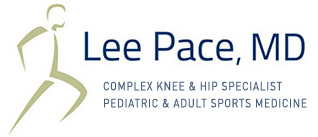Surgery to repair lost or damaged cartilage remains a “final frontier” in sports medicine surgery. However, due to extensive research and improved technology, significant surgical advancements have been made that have made a very positive impact on people’s lives. Here is a look at some different advanced cartilage repair procedures offered by Dr. Pace:
Osteochondral Allograft
The osteochondral allograft procedure utilizes fresh, pre-formed bone and cartilage (“osteo”= bone, “chondral” = cartilage) from a donor to replace an area of damaged bone and cartilage. The osteochondral allograft is very versatile and is a work horse procedure to replace large bone and cartilage defects that are commonly seen in the setting of osteochondritis dissecans or other traumatic or overuse injuries to bone and cartilage. Most osteochondral allografts are considered “fresh” and come from a very recent donor. However, recent technology has produced a shelf-stable osteochondral allograft that can come in very handy for certain types of bone and cartilage defects.
Matrix Associated Autologous Chondrocyte Implantation (MACI)
MACI is the latest generation of autologous chondrocyte implantation, or ACI. The procedure, while ground breaking, does require two separate operations. In the first stage, Dr. Pace takes a biopsy of healthy cartilage from your knee during an arthroscopy. This specimen is sent to a lab where the patient’s own cartilage cells, also called chondrocytes, are grown and expanded. These chondrocytes are placed on a membrane of collagen, a type of connective tissue. This membrane, or matrix, is then implanted in a second operation.
MACI has produced excellent results and is the preferred treatment for large cartilage defects that don’t involve bone. However, postoperative rehabilitation and follow-up are essential to good results.
Microfracture Plus
The microfracture procedure was a landmark operation to treat cartilage defects when it was first described in the 1980’s. By poking holes in the exposed bone of a cartilage defect, bone marrow elements such as stem cells and growth factors filled in the defect and formed a replacement cartilage. While this procedure created the field of cartilage surgery it also was found to be not reliably durable beyond 5-7 years in many patients.
The microfracture plus procedure, however, goes one step further. By adding a biologic scaffold to a microfracture, the body can regrow or more normal cartilage product that more closely resembles native cartilage.. The microfracture plus procedure is indicated for smaller cartilage defects. While this is still a new technology, early results are promising.





